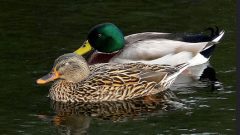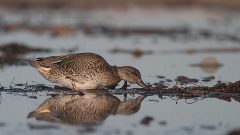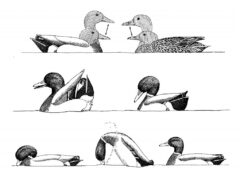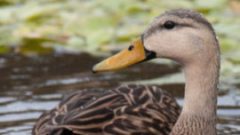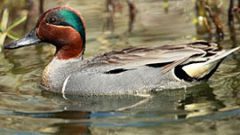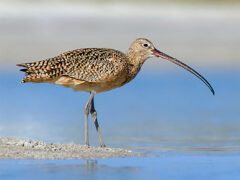The Four Keys to ID
- Size & Shape
Mallards are large ducks with hefty bodies, rounded heads, and wide, flat bills. Like many “dabbling ducks” the body is long and the tail rides high out of the water, giving a blunt shape. In flight their wings are broad and set back toward the rear.
Relative Size
A fairly large duck, noticeably larger than teal but much smaller than a Canada Goose.

 between crow and goose
between crow and gooseMeasurements
- Both Sexes
- Length: 19.7-25.6 in (50-65 cm)
- Weight: 35.3-45.9 oz (1000-1300 g)
- Wingspan: 32.3-37.4 in (82-95 cm)
© Liron Gertsman / Macaulay Library
- Color Pattern
- Behavior
- Habitat























































